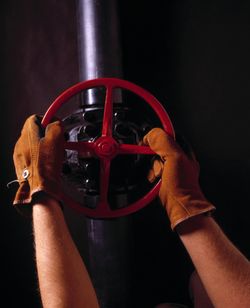 With winter in full swing and the days of blistering heat behind us, you may think that harsh weather conditions at work are gone until next year. The fact is, extreme cold can be just as dangerous as extreme heat.
With winter in full swing and the days of blistering heat behind us, you may think that harsh weather conditions at work are gone until next year. The fact is, extreme cold can be just as dangerous as extreme heat.
When working in freezing conditions, you are at risk of developing frostbite – localized damage to your skin when it freezes. While frostbite initially isn’t permanent, it can lead to permanent nerve damage, amputation, and even gangrene if left unattended. Here are ways you can avoid getting frostbite this winter season.
Signs and Symptoms
When working long hours in the cold, if you start to feel itching followed by pain, immediately get out of the cold and check the affected skin. If the itchy, painful area is white or grayish-yellow, feels unusually firm or waxy, or is numb, seek medical attention immediately. Those symptoms are the first stage of frostbite called frostnip. While not permanently damaging, it can lead to more severe complications if left unattended.
If immediate medical assistance is unavailable, get to a warm room as soon as possible, immerse the affected area in warm, but not hot, water, or warm the skin using your own body heat until you can get treatment. It’s best to avoid using major heat sources like heating pads, and fireplaces since the frostbitten skin is generally numb and can easily be burned.
You Got a Friend in Me
Often an individual is unaware that he is affected by frostbite until someone else points it out because the frozen tissues are numb. It’s best to have a partner so you can monitor each other for signs of cold stress. Most of the time, it’s difficult to determine danger signs when you only rely on yourself.
In and Out
Just because you work in a freezing environment doesn’t mean you have to stay there the entire time. Take periodic brakes during your shift and spend them in a warm room or near heat sources. Even if schedules are tight, taking 15 minutes off your feet in a heated break room could save you from losing your feet forever.
Layer After Layer
When it comes to staying warm, less is definitely not more. When you wear several layers of thin clothing, you are actually staying warmer than if you wear one or two thick layers of clothes. The first layers touching your skin should be made from synthetic fabrics, like polypropylene, that absorb sweat. Outer layers should have fabrics that are waterproof and wind resistant.
It’s also important to wear proper equipment like warm gloves, boots, and a hat. If you become too warm, open a layer or two of your clothing, but not your gloves or hat. Also, make sure your gloves and boots are loose enough that they don’t cut off your blood circulation, which could speed up the frostbite.
Warm Eats and Warm Drinks
While coffee and hot coco are delicious and warm, the high caffeine concentration dehydrates you faster when cold conditions already put you at risk of dehydration. Instead, try sweeter beverages like sports drinks or orange juice. The natural carbs will give you a steady stream of energy and keep you hydrated longer. You can also bump up your carb intake by eating hot pasta dishes, soups, and other calorie-dense foods, which will keep your body fueled while its burning extra calories trying to stay warm.
Frostbite isn’t deadly, but can lead to amputation where you are unable to work if unattended. Stay warm this winter season with these helpful guidelines and avoid the silent but hazardous condition of frostbite.

